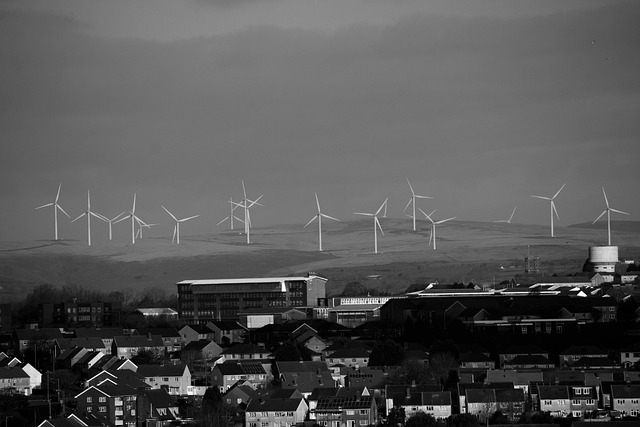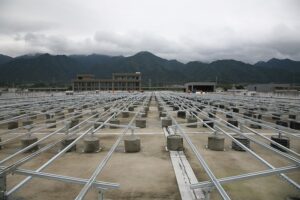
Clean Energy Technology: Pioneering Solutions for a Sustainable Planet
As the world grapples with the adverse effects of climate change and environmental degradation, clean energy technology emerges as a beacon of hope. It encompasses diverse innovations and methods that harness energy from renewable sources without depleting natural resources or producing harmful emissions. This article explores the critical advancements in clean energy technology, its significance in combating climate change, and the promising solutions that pave the way for a sustainable planet.
The Importance of Clean Energy Technology
The increasing global population and the consequent rise in energy demand pose significant challenges to our environment. Traditional energy sources, primarily fossil fuels, contribute substantially to greenhouse gas emissions, air pollution, and habitat destruction. Clean energy technology aims to mitigate these impacts by providing sustainable energy solutions that preserve natural resources and promote environmental health.
Renewable energy sources, including solar, wind, hydroelectric, geothermal, and biomass, form the foundation of clean energy technology. These sources not only generate power without emitting carbon dioxide but also offer long-term sustainability by continually replenishing themselves. By shifting towards clean energy, we can reduce dependence on finite resources and foster an economy fueled by green technology.
Key Innovations in Clean Energy Technology
Over the past few decades, significant strides have been made in various clean energy technologies, enhancing their efficiency, scalability, and affordability. Some notable innovations include:
Solar Energy Technologies
Solar energy remains one of the most widely adopted forms of renewable energy. Advances in photovoltaic (PV) technology have led to more efficient solar panels, enabling greater energy conversion from sunlight to electricity. Innovative approaches such as bifacial solar panels, which capture sunlight on both sides, and building-integrated photovoltaics (BIPV) are transforming urban landscapes by turning buildings into power generators.
Concentrated solar power (CSP) represents another exciting development. By using mirrors or lenses to focus sunlight onto a small area, CSP systems can generate high temperatures that produce steam for electricity generation. This technology has the potential to provide reliable, dispatchable energy, addressing one of the significant limitations of solar energy—its intermittent nature.
Wind Energy Advances
Wind energy has rapidly evolved, with advancements in turbine design and deployment techniques. Modern wind turbines are larger and more efficient, capable of generating significant amounts of electricity even at low wind speeds. Offshore wind farms, installed in bodies of water away from land, utilize high wind potential and minimize land use conflicts.
Additionally, innovations such as floating wind turbines allow for deployment in deeper waters, opening up vast new areas for wind energy generation. These technological advancements not only contribute to energy production but also stimulate job creation in manufacturing, installation, and maintenance sectors.
Hydroelectric Power Refinements
Hydroelectric power has been a significant player in the renewable energy landscape, providing stable and reliable electricity. Recent technologies focus on improving the efficiency of existing dams and developing run-of-the-river systems that minimize ecological disruption. Innovations in small-scale hydro systems aim to harness the power of flowing water without the environmental impacts associated with large dams.
Moreover, advancements in hydrokinetic energy—the conversion of the kinetic energy of moving water, such as rivers and tidal flows, into electricity—are emerging as an additional vector in the hydro energy sector. These technologies harness energy while maintaining aquatic ecosystems, demonstrating a balance between energy generation and environmental stewardship.
Geothermal Energy breakthroughs
Geothermal energy taps into the Earth’s internal heat, offering a continuous and stable energy source. Recent technological advancements have enhanced the ability to access geothermal resources in a variety of conditions. Enhanced geothermal systems (EGS) involve injecting water into deep rock formations, creating steam that drives turbines without relying solely on naturally occurring geothermal reservoirs.
This approach holds immense potential for expanding geothermal energy’s geographical scope, enabling utilization in regions previously deemed unsuitable for conventional geothermal development. By capitalizing on this energy source, we can provide a sustainable and consistent power supply with minimal environmental impact.
Energy Storage Solutions
One of the critical challenges faced by renewable energy systems is their intermittency. Innovations in energy storage technologies, primarily battery systems, play a pivotal role in addressing this issue. Lithium-ion batteries have spearheaded the energy storage revolution, providing more potent and efficient storage solutions for both residential and industrial applications.
Moreover, developments in alternative storage solutions, such as flow batteries and solid-state batteries, are promising advancements that could further lead to longer-lasting and safer energy storage options. By enhancing energy reliability and fostering grid stability, these innovations will help maximize the use of renewable energy sources and facilitate a smoother transition to a clean energy economy.
Policy and Investment: The Backbone of Clean Energy Technology
The burgeoning clean energy technology sector is not solely driven by technological innovations. Policies and investments play a crucial role in fostering an environment conducive to the growth and deployment of clean energy solutions. Governments worldwide are developing and implementing policies that incentivize renewable energy adoption, such as tax credits, grants, and feed-in tariffs.
Moreover, international agreements such as the Paris Agreement underline the global commitment to reducing greenhouse gas emissions and transitioning towards sustainable energy systems. These agreements incentivize countries to invest in renewable energy infrastructure and research, facilitating technological advancements and collaborations worldwide.
Private sector investments in clean energy technologies continue to grow, with venture capital flowing into startups that focus on innovative energy solutions. This culture of investment not only fuels rapid technological advancement but also encourages collaboration between governments, research institutions, and industry players to solve pressing energy challenges.
The Role of Clean Energy in Economic Growth
Beyond environmental benefits, clean energy technologies have the potential to drive significant economic growth. As highlighted by various sustainability reports, transitioning to clean energy systems can create millions of jobs in manufacturing, installation, maintenance, and research sectors. The renewable energy sector is already a significant job creator, often offering more sustainable and long-term employment opportunities than traditional fossil fuel industries.
Furthermore, investment in clean energy can lead to innovation hubs, fostering local economies and driving technological advancements. As nations become more energy independent by tapping into renewable resources, they can reduce reliance on imported fuels, thereby enhancing energy security and promoting local economies.
The Path Ahead: Challenges and Opportunities
While significant progress has been made, numerous challenges remain on the path to a fully realized clean energy future. Public awareness, technological deployment, and regulatory frameworks must continue evolving to overcome obstacles such as limited infrastructure, market volatility, and resource accessibility. Collaboration between stakeholders including governments, researchers, and businesses is essential for addressing these challenges and generating sustainable solutions.
The public’s perception of clean energy technologies also plays a critical role in their deployment. Education and awareness campaigns can help dispel myths about renewable energy, creating a more informed citizenry that advocates for sustainable practices and policies. As individuals and communities recognize the importance of clean energy for a stable climate and healthier environment, the collective movement towards sustainable living will be reinforced.
Conclusion
Clean energy technology is at the forefront of a global movement toward sustainability. Through continuous innovations, policy support, and public engagement, we can harness the transformative power of renewable energy sources to combat climate change and promote a healthier planet. As pioneers in clean energy solutions develop new technologies and overcome existing challenges, the vision of a sustainable future becomes increasingly attainable. By investing in a cleaner energy landscape, we not only foster environmental resilience but also pave the way for economic growth and social equity, ensuring a brighter future for generations to come.



